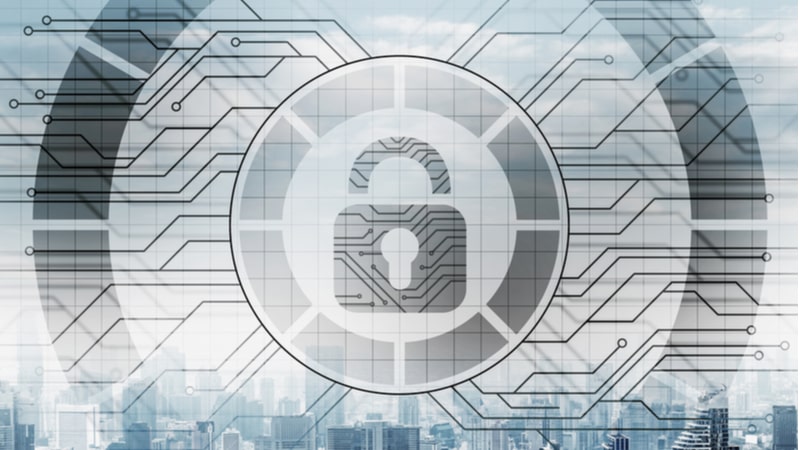Five Steps to Protect Your Agency Enterprise When Employees Return

Many of us are going back to work in person – and this includes the Federal government. The Office of Management and Budget (OMB), Office of Personnel Management (OPM), and General Services Administration (GSA) announced on June 10 that the 25 percent occupancy restriction for Federal offices has been lifted, and agencies will soon be able to increase the number of employees in their physical workplaces.
While much of the focus, and deservedly so, is on ensuring employees and the workspace meet COVID guidelines, there is another area of concern – cybersecurity. The COVID-19 pandemic forced a hurried shift to remote work in 2020 and agencies had to prioritize employee productivity and remote access. While home and public networks, along with cloud-based applications kept everyone working, they also introduced a hidden threat.
As lockdown restrictions lift and offices prepare to reopen, we must now address the risk posed by an influx of new and returning devices that have been operating with reduced IT oversight for an extended period of time.
As we all started working remotely, often this was replaced by consumer-grade routers with limited security controls on home and public networks, and an IT team fully reliant on a handful of endpoint agents (that can break or be disabled) to ensure device hygiene. Extended periods of remote work with infrequent IT oversight and limited network security controls causes device hygiene and security posture to deteriorate. Dubbed “device decay,” this exposes devices to vulnerabilities and threats, and translates into an increased attack surface for malicious actors to target.
As agencies prepare to reopen after months of low office occupancy, devices with degraded security posture can pose a serious risk to agency networks. They provide an entry point for threat actors looking to infiltrate agency networks, exfiltrate sensitive information or wreak havoc on day-to-day operations. This comes at a time of massive increases in cyberattacks, with the FBI alone handling more than 4,000 cybercrime incidents per day, a four-fold jump from pre-pandemic days.
Device decay manifests itself in different ways across different cohorts of devices:
- Employee agency devices that started with generally good security posture in pre-pandemic days and have degraded over time – broken agents, missing security patches, unauthorized applications, and configuration drift.
- New devices, often consumer-grade laptops, that got added into the work ecosystem during the pandemic without gold master images, and that never had the same stringent levels of device hygiene.
- In-office or remote devices that were switched off because they weren’t needed during the work-from-home phase and haven’t been kept up to date with the latest security patches.
- Always-on IoT and OT devices such as physical security systems, conference room smart TVs and HVAC systems that have remained idled/unused and gone unattended by IT, with potential exposure to vulnerabilities discovered in multiple TCP/IP stacks used by hundreds of vendors and billions of devices. These devices will take a long time to be patched, if they can be patched at all.
The following best practices can fortify agency network defenses to prepare for returning workers and their devices.
- Implement real-time inventory procedures. Managing risk starts with a continuous and accurate inventory process. You need to ensure you have full visibility and detailed insight into all devices on your network, and that you’re able to monitor their state and network interactions in real time.
- Assess and remediate all connecting devices. Set up a system to inspect all connecting devices, fix security issues, and continuously monitor for potential device hygiene decay. While many users are still out of the office, use this time to get a head start. First check the idled and always-on in-office systems to ensure they have the latest software releases and security patches installed and running. Assess them for vulnerabilities disclosed while they remained dormant. As degraded and non-compliant devices return to the office, initiate remediation workflows in concert with your security and IT systems.
- Automate zero trust policy Adapt your zero trust policies to include device hygiene and fix security issues such as broken security agents, unauthorized apps and missing patches before provisioning least privilege access. Segment and contain non-compliant, vulnerable and high-risk devices to limit their access until they’re remediated.
- Continuously monitor and track As devices start returning to the office, they are also expected to be away for extended periods. Continuously monitor all devices while they’re on your network, maintain visibility into their state while off-network, and reassess their hygiene after extended absence. Constant vigilance will allow you to adjust your approach based on the volumes and types of devices connecting to your network and the issues/risks that appear over time.
- Train/equip staff to help protect your network. Finally, you should ensure that these security measures are properly reflected in official agency policies. Employees should know the basics such as avoiding the use of unauthorized apps and keeping their devices up to date, so they can assist with combating device decay and help maintain high levels of device and network hygiene.
Managing device decay is not a one-time activity. In the new normal, hybrid work practices will be implemented differently by various agencies and will also vary by groups within agencies. What will be constant across all these work practices is that devices will remain away from the office for extended periods before returning/re-connecting and will be prone to device decay during the away-period.
